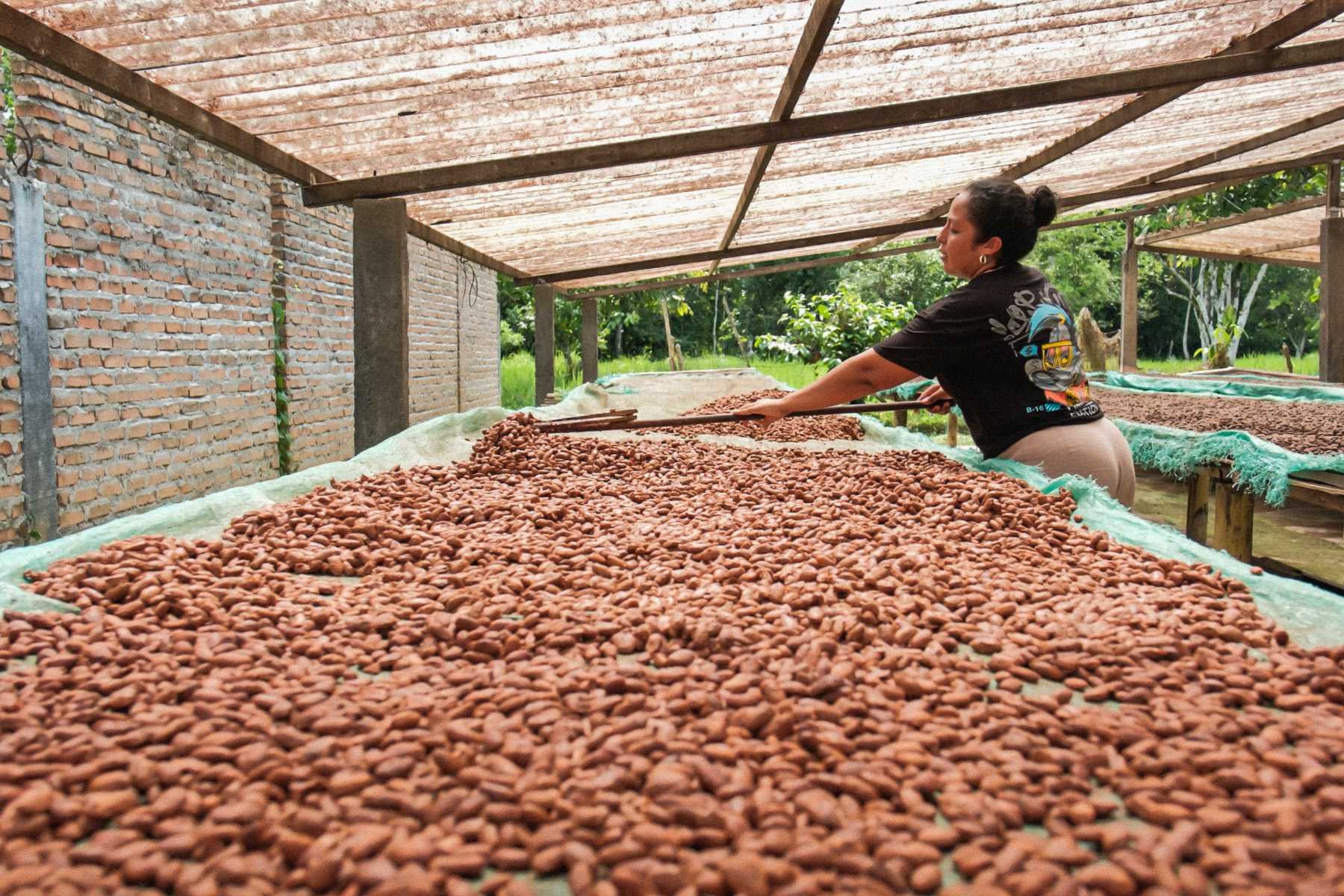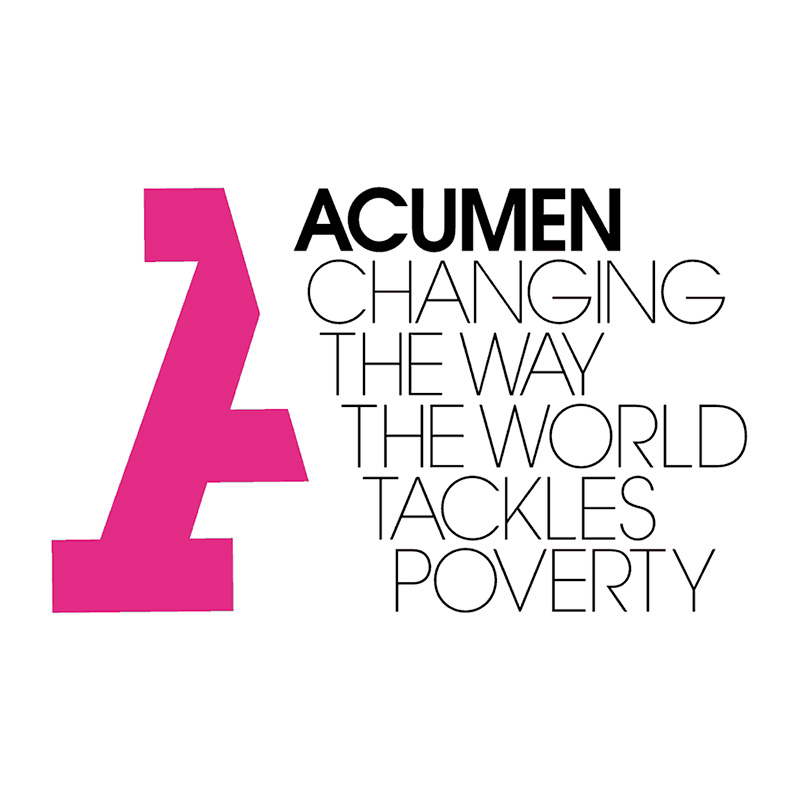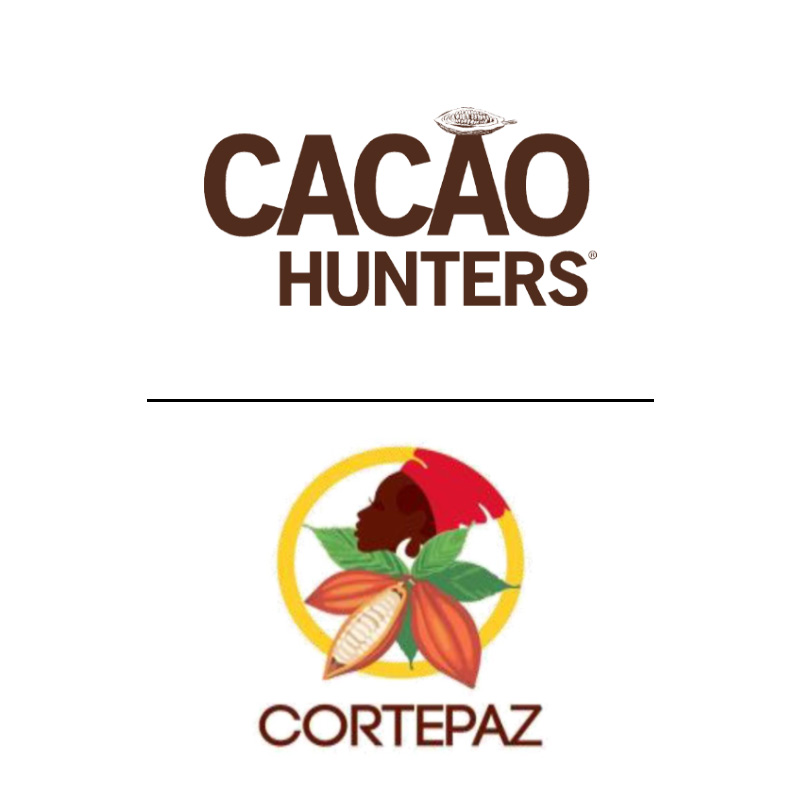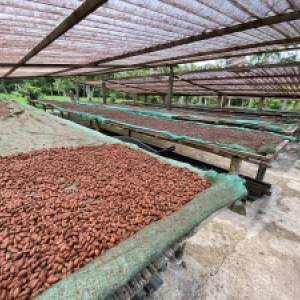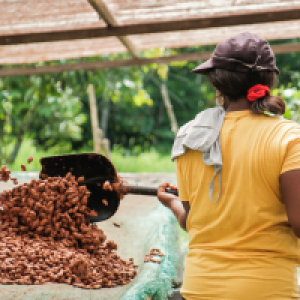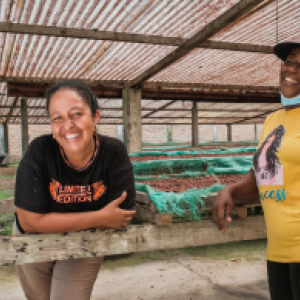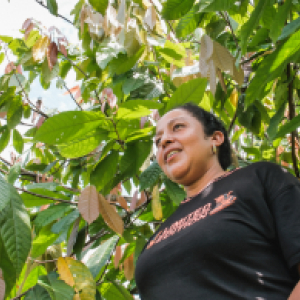A vertically integrated impact investment from Acumen supports two links in Colombia’s cacao value chain.
“Getting a good product out of the ground is only 50% of the job. The other half is selling it.”
These words come from a soon-to-be-published Acumen investment case; they’re quoting some agricultural wisdom well-known to the people in this story. The “good product” is cacao. The “selling it” part needs to ensure a decent income for smallholder farmers.
The people in this story represent various points in this value chain – farmers, cooperative members, producers. And influencing two links in this chain is an impact investor, Acumen, who pioneered the concept of Patient Capital more than 20 years ago with the goal of “investing in companies creating sustainable solutions that enable people living in poverty to live better lives.”
Finally, there’s me, because by the end of this story I’ll eat a bar of chocolate with origins in Tumaco.
Tumaco cacao
Tumaco sits along the southern Pacific coast of Colombia, a municipality and port city in the Nariño region. Over 80% of the population is Afro-Colombian. Carnivals in the region celebrate good harvests. Fighting among illegal armed groups, such as the FARC, spills over into civilian populations and threatens human rights. In the lowlands, houses sit on stilts. Further inland, cacao grows.
Cacao can be a fussy crop; plant types and fertilisers must match the right soil, rainfall and shade conditions, all of which affect yields dramatically. Better inputs – trees, soil, everything that goes into growing – would help improve yields. So would better technical assistance.
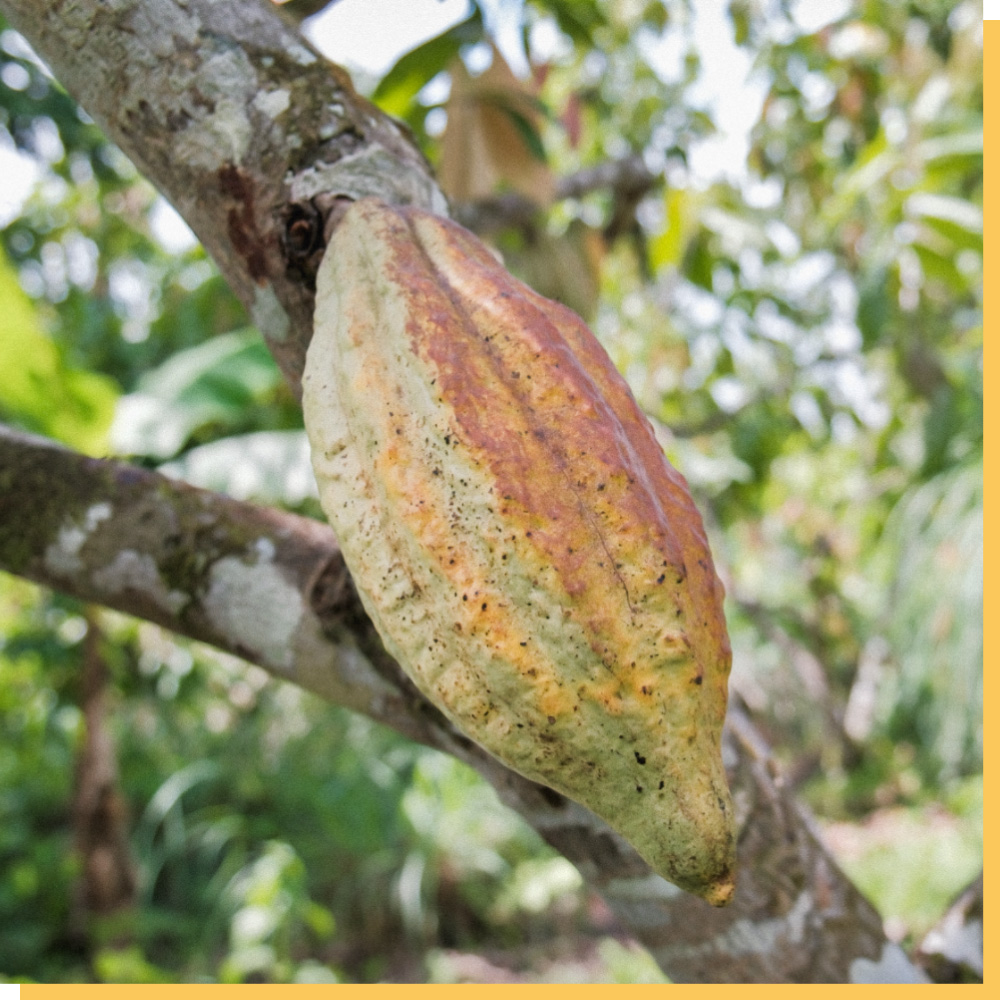
USAID looked into this in 2019, writing from a development perspective; the authors of An Analysis of the Supply Chain of Cacao in Colombia concluded that, “Cacao has the potential to contribute meaningfully to development in Colombia when market infrastructure is in place and technical assistance is available.”
Upgrading infrastructure and training bears a considerable cost, however. Without targeted interventions, these things are out of reach for the cacao farmers of Tumaco. “Government interventions,” according to Acumen stakeholders, “are underfunded and rarely extend to rural communities. NGO programming lacks long-term sustainability. Cell phone access for internet-based tutorials is spotty at best.”
Tumaco’s cacao farmers, in short, are cut off from support they need to be more efficient and assure their livelihoods.
Shortfalls
Ideally, cacao farmers in the region could expect to harvest “between 150-200 kilograms per hectare,” according to the Federacion Nacional de Cacaoteros, and “450 kilograms of dried beans per year.”
Yields were falling short of this potential in 2014, when Gustavo Mindineros and Ruben Lasso founded CortePaz (Corporación Técnica para el Desarrollo del Pacífico). Gustavo and Ruben’s goal was to increase the productive development of their predominately Afro-Colombian community in Tumaco. Yield shortfalls put this community’s incomes at risk and, downstream, thwarted the potential to develop a thriving regional ecosystem for cacao. Without efficient farms, working in cooperation, there was no chance at generating the critical mass of cacao necessary to build resilience and absorb shocks to the market, many of which are climate-related and likely to worsen.
Market assurance
While there was a market demand for the type of cocoa farmers in Tumaco grew, to build CortePaz as a sustainable business would need to mean a more solid assurance that the market could absorb increased production.
“To guarantee sustainable cacao production and generation of a decent income for families, we needed to find a strong commercial partner,” said Gustavo, calling in by phone on a busy, brightly lit street in Tumaco. Also present on the call were members of Acumen’s Investment and Communication teams.
Gustavo’s connection to a market was another Acumen investee: Cacao de Colombia (AKA Cacao Hunters), “the first Colombian company to locally source and produce premium chocolate in the region,” to quote the company’s website.
Cacao de Colombia bridges Colombia’s local cacao producers and the international chocolate industry. The company works to build reliability in the cacao supply chain, and as part of this goal they help farmers improve quality and yields.
According to Gustavo, the partnership offered him assurance because Cacao de Colombia “wanted us to satisfy a significant percentage of unmet demand.”
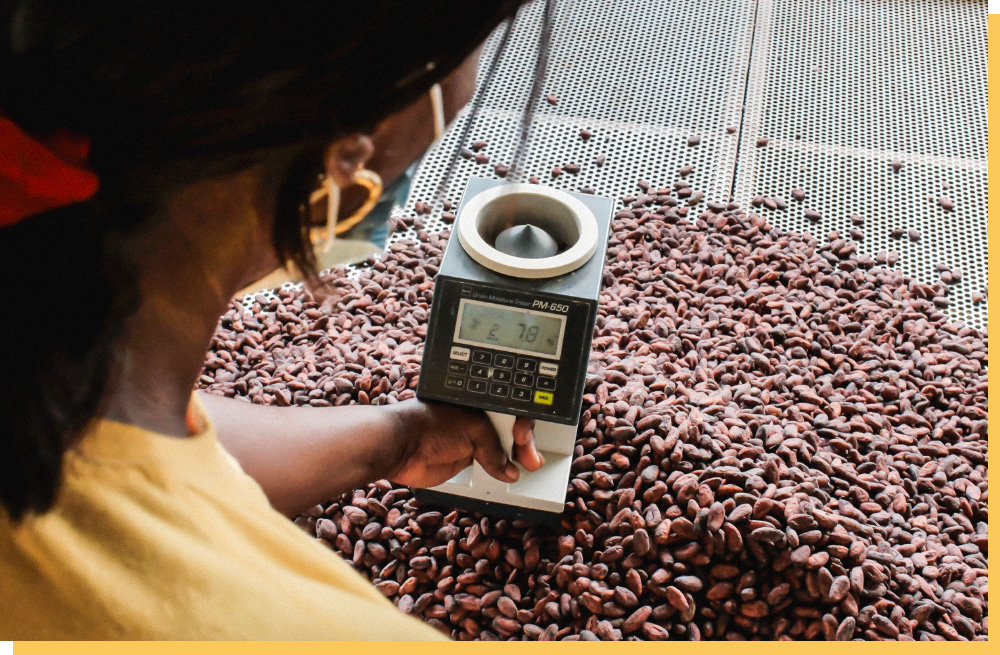
Needs-based technical assistance
Since CortePaz would have to meet Cacao de Colombia’s yield and quality specifications, there was an incentive for Gustavo to help farmers in his association elevate their production practices. Gustavo had heard feedback from the community that this gap was the primary barrier towards improved production and incomes.
Filling this gap, however, was easier said than done. The farm families Gustavo worked with had no spare capital for better inputs, let alone technical assistance. Going to a bank was not an option for these smallholders, as they were “already exhausted with the whole issue of access to credit,” said Gustavo.
Paz’s pilot, in response, was a technical support unit, established thanks to organisational and administrative support from the International Trade Center (ITC) and a $38,000 grant from Swiss Contact.
The unit first needed to understand what resources it would take to increase productivity of farms. After gathering this data, including estimations of production increases, Gustavo developed an embedded credit facility for CortePaz. Farmers could “forego any upfront payment, and instead pay for the production support services at the end of the season through the sale of the increased yields of their cacao production,” according to Elvia Gomez, Associate Director, Acumen Latin America
CortePaz creates a tailored work plan for each of the 150 farms they support, then provides the necessary labour and inputs for the revamp. “Today, we are already having results,” said Gustavo. “Both in productivity and repayment of the services by the producers.”
Meanwhile, at the far end of the chain…
Here I sit, typing on a train, a chocolate bar in the bag at my feet. The train is moving across Belgium, known for its chocolate. Belgians consistently rank in the top 10 chocolate consumers per capita. But even here, it wasn’t easy to get a chocolate bar made from cacao grown in Tumaco. I had to go to Gent.
Acumen invests vertically
Acumen invests in two links in Colombia’s cacao value chain, as Cacao de Colombia brings together CortePaz with other cocoa growers to process cacao into award-winning chocolate.
This relationship existed before Acumen invested; the “good product” and “selling it” parts of our opening quotation were already in motion. And yet, there was still great potential to optimise value, boost incomes and generate learnings.
By investing in both companies, Acumen tested a strategy of vertically integrated impact. They based this decision on careful consideration of interrelated and unmet needs for smallholder farmers:
>Financing and land ownership
>Training access
>Market access
Opening these access points for smallholder farmers in Colombia is clearly aligned with Acumen’s overall goal for agricultural investments in Latin America: “Building the systems to help move millions of Latin Americans out of poverty.” Globally, Acumen has already improved the lives of 37 million smallholder farmers, so their experience in this regard is formidable.
Regarding the investment in Cacao de Colombia, experience taught Acumen to recognise the value of a vertically integrated brand that understands the needs of smallholders. “When we made our first investment in Cacao de Colombia in 2015,” said Chris Wayne, Associate Director, Investing in Agriculture at Acumen, “the company was the first to locally source and manufacture premium chocolate in the region. Vertically integrated brands like Cacao de Colombia have consistently shown outsized impact on smallholder populations across our portfolio.”
Acumen invested in Cacao de Colombia because they could create consistent market access for smallholder farmers, bundled together with other services. Acumen invested in CortePaz to fill related unmet gaps in technical assistance and access to finance.
The CortePaz investment began in 2022, with a long-term debt instrument and revenue-based payments, making Acumen the first institutional investor in the association. Chris remarked that he recognised, across the agriculture portfolio, “shortcomings in meeting certain needs of smallholder farmers, which put a ceiling on a smallholder’s growth. These include financing, land ownership and technical assistance services. The CortePaz investment gives us the proper opportunity to understand and measure the value that innovative technical assistance programs can unlock for smallholder farmers. It is a solution that, if proven out, could be replicated for other portfolio companies that offer technical assistance programs to their beneficiaries.”
In CortePaz’s case, the non-financial support Acumen offers allows them to explore the potential for replication. As part of the investment, Acumen created an independent subcommittee exclusively focused on the technical assistance program, with a governance role over its expenditure and operations (without influencing other parts of the cooperative). This gives Acumen greater visibility on how this facility benefits smallholder farmers.
Part of the value of the investment is generating insights. Acumen seeks to understand how the impact and performance of companies can be affected – in a positive or negative way – when they invest in companies that work together in different parts of the value chain. Importantly, it tests this innovative approach while actively improving the lives of smallholder farmers.
This points to some strategic thinking Acumen is rolling out with a new investing initiative, called Trellis, to be featured in a whitepaper later in 2024. According to Chris, Acumen is pursuing this strategy, “to understand the value chains, and the larger systems that smallholder famers exist in, and be more intentional about the types of business models the system needs. There may well be multiple investments needed at different parts of the value chain for smallholders to develop wealth. We think the philanthropic-backed nature of our initiative is particularly conducive to this type of investing.”
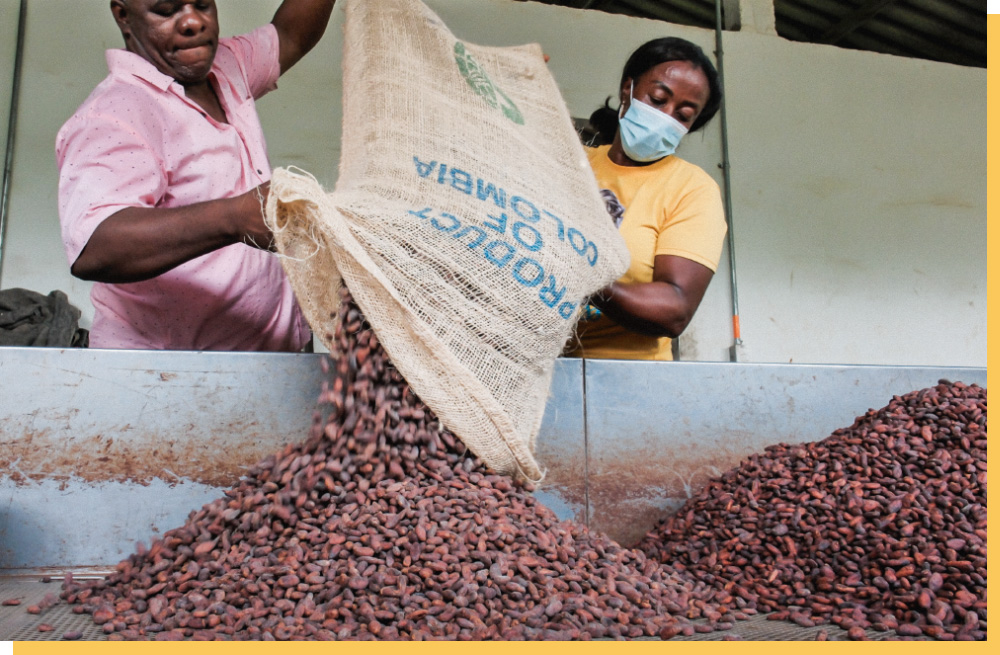
Impact
Citing the latest figures from the Cacao de Colombia investment, smallholder farmers that sell wet cacao to the cooperative reported more net income than what they would make by selling to more traditional markets. 81% of farmers reported improved quality of life. They spoke of better prices, cost savings, faster cash on hand, and also the efficiencies gained by learning best practices.
Formal impact data collection is still on the horizon for the CortePaz investment. Acumen estimates that “in the long-term the initiative will enable smallholder farmers to increase their cacao productivity over 4x compared to their current production. When combined with improvement in the quality of their cacao harvest, smallholder farmers are expected to increase the income by 385%.”
The investment in CortePaz is still in progress, but if proven successful, Acumen sees scaling potential in the technical assistance program. “We believe that in the short-medium term, CortePaz has the potential to reach other cacao associations in the region that could add value to their associates with this program,” said Gomez. “In the long-term, this initiative could expand to other regions, replicable and adjusted to the needs of different crops.”
Impact data collection for CortePaz will involve measuring the synergistic relationship with Cacao de Colombia. Acumen’s analysis will “assess the impact of the price and consistency of the offtake market that Cacao de Colombia provides to CortePaz farmers and its impact on improve livelihoods for farm families in the cooperative.” All without double-counting the impact, as Chris was quick to reassure.
Next challenges
Gustavo and Ruben founded CortePaz with the idea that they could improve the lives of smallholder farmers in their community. Throughout a wide-ranging conversation with Gustavo, he expounded not only on how CortePaz does this now, but what he’s learned about the still unmet gaps this community faces in setting itself up for long-term success in agriculture.
Gaps remain in gender and agricultural education. Diversification of crops could help smallholder farmers boost resilience and generate income when cacao is not in season, as Gustavo often points out. And, hovering over Colombian agriculture, is the need to provide farmers with viable alternatives to illicit crops, something Acumen pointed out in their case on Cacao de Colombia. Lastly, one idea Gustavo kept returning to in our conversation was the need to fill a generation gap. Historically, cacao farmers have been between the ages of 50-80; younger people don’t perceive the value of crops like cacao.
If the investment in CortePaz succeeds, there’s hope of changing this perception. In Acumen’s experience, “the primary driver for young people is seeing agriculture as a viable and lucrative career.” But to show that being a cacao farmer is a viable path for a young person, there must first be something to show: the improvement of lives in real numbers. Given the impact of Acumen’s investment, Cacao de Colombia and CortePaz have both shown progress, with hopeful signs for more.
More to come with Trellis
Acumen’s new Trellis initiative, as previously mentioned, is very much aligned with the sort of vertically integrated investment profiled here. According to Chris, the name “Trellis” was chosen to allude to the type of interwoven system of support Acumen believes different business models can create within a given food system to augment both farmer and company growth. The intended result is to create a web of support for profitable, climate resilience farms. Trellis actively seeks investments that have synergies within their portfolio.
Chris pointed out the challenges of this approach and how collective action can help. “Because our capital is limited,” he said, “and because agriculture economies are complex, we can’t make each of the systems-level investments we’d like. This is where the value of partnership with co-investors is critical. Working strategically, investors have an opportunity to make synergistic investments within the same value chain or region. Our hope is to continue to build and participate in coalitions of like-minded investors with this goal in mind.”
Looking towards the future, Acumen is actively performing due diligence on a cacao company in West Africa and has cacao companies in the early-stage pipeline in East Africa. In these cases, they’ll seek to apply learnings gathered from the vertical investment in CortePaz and Cacao de Colombia – in addition to what they already know from 20+ years-worth of agricultural investments.
I bought a chocolate bar in Gent
The bar cost €10.50. It weighs 60 grams. It’s comprised of 85% cocoa beans from Tumaco.
I bought it to embrace my role in the value chain. And out of curiosity. Before I tasted the chocolate, I took myself through an elaborate palate-cleansing ritual. This I did out of respect for the farmers – I wanted to taste what they grew.
Pineapple skin aroma. Roasted nuts. Acidity of tropical fruits or a new wine. Butterscotch in the finish.
How much of my €10.50 went to farmers in Tumaco? Hard to say for sure, but some back-of-the-napkin calculation would put it well under a euro (traders can get a whole kilo of cacao beans for under €3).
Let’s say one of CortePaz’s farmers got a cut of 50 cents from my purchase. When cocoa prices fall on the global market, as they have periodically in the past five years, that cut gets slimmer – and even price spikes, currently happening in the market, don’t necessarily help every link in the cocoa value chain. Large cacao producers have many strategies at their disposal to absorb these fluctuations (they can amalgamate bulk chocolate, adjust who they buy from and sell to), but smallholder farmers growing cacao, as well as processors one step down the chocolate value chain, lack these options. The way these farmers and producers build resilience is through better inputs and practices.
This won’t happen unless investments like Acumen’s happen. And scale. And jump geographies. And bring in likeminded co-investors. And repeat. Assuring a decent income for smallholder farmers in the cacao trade depends on it.


